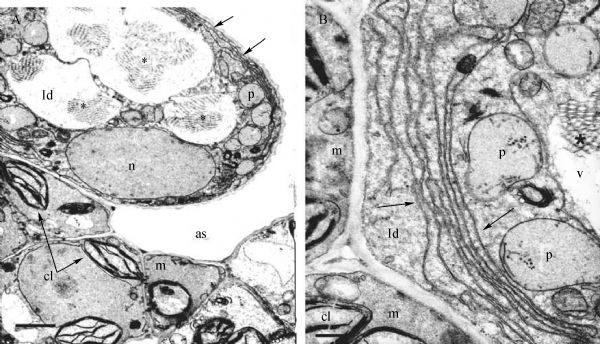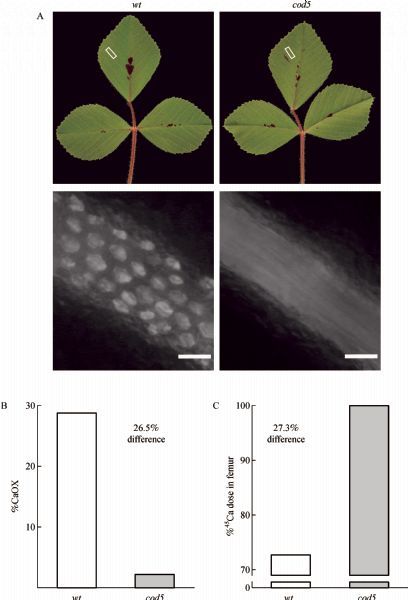Both
in vitro (
Nakata and McConn, 2006,
2007a) and
in vivo (
Morris et al., 2007) nutritional models have been utilized in assessing the nutritional enhancement of the genetically modified oxalate plants. Initial investigations centered on the use of an
in vitro dialysis method that simulated the processes of human digestion and absorption. This quick and economical procedure allowed nutritional screening of calcium availability in the various
cod plants. This investigation showed that calcium availability generally correlated inversely with the amount of calcium bound in the form of the oxalate crystal (
McConn and Nakata, 2004;
Nakata and McConn, 2006,
2007a). Thus, the plants with more calcium bound in the oxalate crystal had reduced calcium availability while the plants with less calcium in the form of the crystal showed enhanced calcium availability, compared to controls. Based on these encouraging results, a more definitive
in vivo study was undertaken to prove the nutritional improvement in an animal model (
Morris et al., 2007). Mice were fed either extrinsically or intrinsically
45Ca-labeled diets derived from labeled wild-type or
cod5 plants (Fig. 3B). By measuring the amount of
45Ca incorporated into bone it was determined that the mice fed the
cod5 diet were able to absorb and utilize more calcium from this modified plant food than mice fed a wild-type control diet containing an equal amount of total calcium (
Morris et al., 2007). The increase in calcium absorption was found to be proportional to the amount of calcium oxalate that was genetically removed from the
cod5 plant (Fig. 3C). Overall, these studies prove that reducing the oxalate content in edible plants is a viable strategy to improve the nutritional value of plant foods. The modification, in this case, was also accomplished using a non-transgenic approach. Such an approach should alleviate the problems associated with the public acceptance of transgenic foods. In addition to the nutritional improvement, the ability to genetically reduce the oxalate content in plant foods also has another potential benefit. Studies have shown that the absorption of oxalate from plant foods contributes more than previously thought to kidney/urinary stone formation (
Holmes et al., 1995;
Holmes et al., 2001). Therefore, removing the oxalate content in plant foods will benefit those prone to renal stones.







